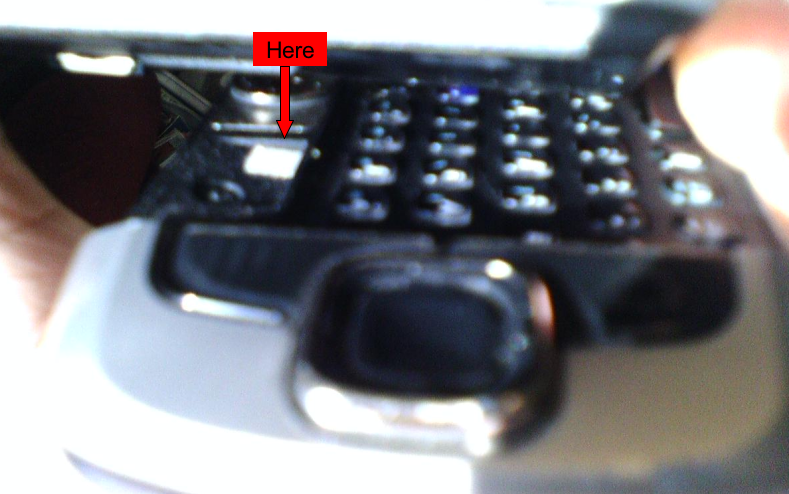
As any Sidekick owner – be it Sidekick I, Sidekick II, or Sk3 – can tell you, if your Sidekick (also known as the Danger Hiptop) has been exposed to water – even if you don’t think that it has suffered water damage – it will preclude any chance of your getting your Sidekick repaired or replaced under warranty. In fact it may void the warranty outright. But how do they know?
Here, we show you pictures of the tricky traps that either Danger or Tmobile has hidden on your Sidekick to reveal to them – even if not to you – whether your Sidekick has been exposed to water.
For this article, we are focusing on the Sidekick 3 (SK3) as that is what most folks have now.
First, we start with the back. Remove the back of your SK3, and remove the battery. Holding the Sidekick upright with the back to you, look at label in the middle of the back. You’ll see your SIM card to the left of the label, and you’ll see some bar codes on the label which correspond to your IMEI and serial numbers. Now, see the circle logo in the lower right, that says “RECYCLE” on it? Good.
Now, look just to the right of that circle, and you’ll see a little white dot. It looks as if the plastic of the Sidekick’s body has had a dot punched out of it (because it has), and that white dot is the material behind it (because it is).
The Internet Patrol is completely free, and reader-supported. Your tips via CashApp, Venmo, or Paypal are appreciated! Receipts will come from ISIPP.
That dot turns red if it is exposed to water.
Now, of course, it’s entirely possible that your Sidekick could have a little water exposure along the front, and the moisture might never get past the back cover, let alone below the battery and to that moisture indicator. And if that’s the case, they’ll never know, right?
Wrong.
After putting your battery back in and your cover back on, we want you to take your Sidekick, and turn it over and hold it as if you were about to actually use it. Start with the screen in the closed position.
Now start to flip open the screen, but stop when the screen is only half-way open – in other words, when the screen is at right angles to the body of the Sidekick, like this:
Now, peek in under the edge of that screen that is sticking up. That is to say, the part of the screen that is the bottom of the screen when it is closed, and that is now halfway to becoming the top of the screen. Scrunch your face down there and peek underneath there, and look along the upper edge of the Sidekick, just above where the ‘2’ and ‘3’ keys are.
There, do you see it? It’s a little white square.
A little white square that turns red when exposed to moisture.
And that’s how they know.
The Internet Patrol is completely free, and reader-supported. Your tips via CashApp, Venmo, or Paypal are appreciated! Receipts will come from ISIPP.













the same thing happened to my sidekick lx.. never been submerged in water and yet the square under the screen is red.. the 2 under my battery are as white as can be.. and now this voids my warranty and i was looking to get a new one because my buttons are starting to wear out after owning the phone for over a year.. they are asking me for a 130 deductable for something im not responsible for.. t mobile sucks
Cor-pirate greedites at there finest!!
Any way to screw the conned-sumers they will!
Very interesting. I can honestly say I have never dropped my SK3 in any liquid ( i.e. submersion). But when I looked under the side of the screen, the square is red! The only things I can think of are taking it to a picnic in high humidity weather & maybe picking it up with slightly damp hands a couple times. I would agree that these may be too sensitive. (The dot under the battery is still white b/c like I said it has never been submerged.)
Very interesting. If you could prove those moisture sensors were oversensitive and thus caused people with legit warranty claims to be denied, you might have a cool class action on your hands.